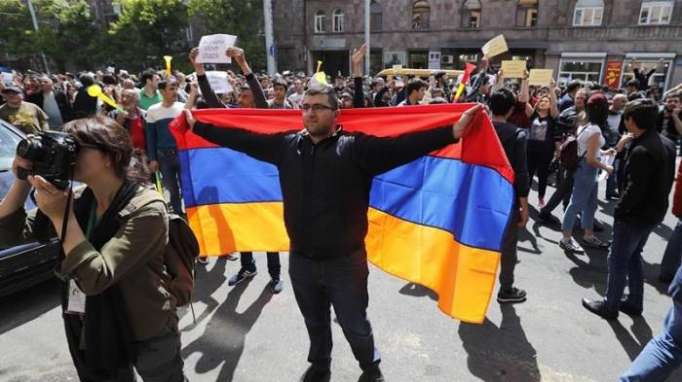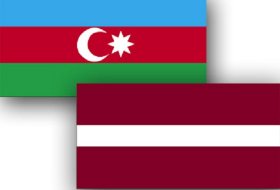The political situation in Armenia remains "fragile", according to analysts, as mass protests continue in the capital, Yerevan, for the seventh consecutive day.
The protests began on April 13 after Armenia's ruling Republican Party nominated former President Serzh Sargsyan for the prime minister’s post earlier this month.
Many Armenians do not want to see Sargsyan as the head of the state again, as his government has been accused of corruption and of allowing oligarchs to thrive.
The 63-year-old leader had in the past promised not to run for the post of prime minister but was formally nominated by the Republican Party earlier this month.
The country amended its constitution to change the government from a presidential to a parliamentary system in a 2015 referendum, making the presidency largely ceremonial and strengthening the office of the prime minister.
This would allow Sargsyan, who served two consecutive terms as president until 2018, to maintain his influence on the politics of the country.
Corruption and the oligarchy
"I participated in the protests because I no longer want to see my country ruled by Sargsyan's corrupt party and the oligarchy," Gayane Ghazaryan, a student protester, told Al Jazeera from Yerevan.
"Most people have no jobs or get paid less than $100 a month. The elderly live on a pension of about $60 a month. I don’t want to see my people emigrate to Russia or elsewhere any more. I don’t want to see my country suffer any more.
"Armenia is gradually turning from a democracy into a totalitarian regime," Ghazaryan continued. "We’re protesting because we want to see a country where there is equality and justice."
The protest leader and opposition figure, Nikol Pashinian, declared a popular, non-violent "velvet revolution" in Armenia and urged demonstrators to keep besieging ministries, the prosecutor's office, the central bank and other governmental buildings.
According to local media, activists were able to cut off almost the entire centre of the capital, barricading streets and even preventing the metro from running.
Several protesters arrested
The protests escalated on Thursday as people clashed with the police, resulting in several people being injured and more than 20 being arrested.
"I personally know someone who's currently in the hospital with serious injuries," Mikael Zolyan, a political analyst based in Yerevan, told Al Jazeera.
"However, so far the level of police violence has not been as bad as in 2008 when 10 people died in the clashes [with police]."
According to Lara Aharonian, the director of a women's resource centre, Women of Armenia, "police used excessive and disproportionate force against thousands of peaceful protesters and arbitrarily arrested several activists to prevent them from reaching the Assembly on the day of the parliamentary vote to elect Sargsyan as prime minister on April 17".
"Following that day, there were rallies and civil disobedience actions where peaceful protesters surrounded different government and administrative buildings in different parts of the city, announcing a general strike for students and workers to paralyse the whole city," she told Al Jazeera.
Damage to Sargsyan
But Zolyan, the analyst, says these protests are unlikely to hurt Sargsyan in the short-term and won't prevent him from keeping his post as prime minister.
"But if the opposition succeeds in bringing a serious "fight" to him and demonstrating the will to fight to the end, Sargsyan's rule may not be as calm and long-running as he would like it to be," he told Al Jazeera.
Armenian journalist Grigor Atanesian believes the unrest might bring about significant change.
"A police station takeover in July 2016, followed by mass protests, resulted in Sargsyan bringing in a new prime minister, Karen Karapetyan, who launched a programme of economic reforms," Atanesian told Al Jazeera.
The intensity and pace at which the protests have escalated, has come as a surprise to the authorities and analysts. As protests continue, it is hard to predict what turn they will take.
"The situation is changing very fast, and the number of protesters grew from hundreds to tens of thousands in just ... days," Zolyan, the analyst, said.
"In the coming days, it will be clear: either the government will crush the protests or the protests will be so huge, that they [authorities] won't be able to suppress them. And that will likely result in a scenario similar to what happened during the Arab Spring or during the Euromaidan in Ukraine, which brought about a change of government."
However, according to Zolyan: "Any small incident can make or break this. It's a very tense and fragile situation."
Read the original article on Al Jazeera.
More about: Armenia















































